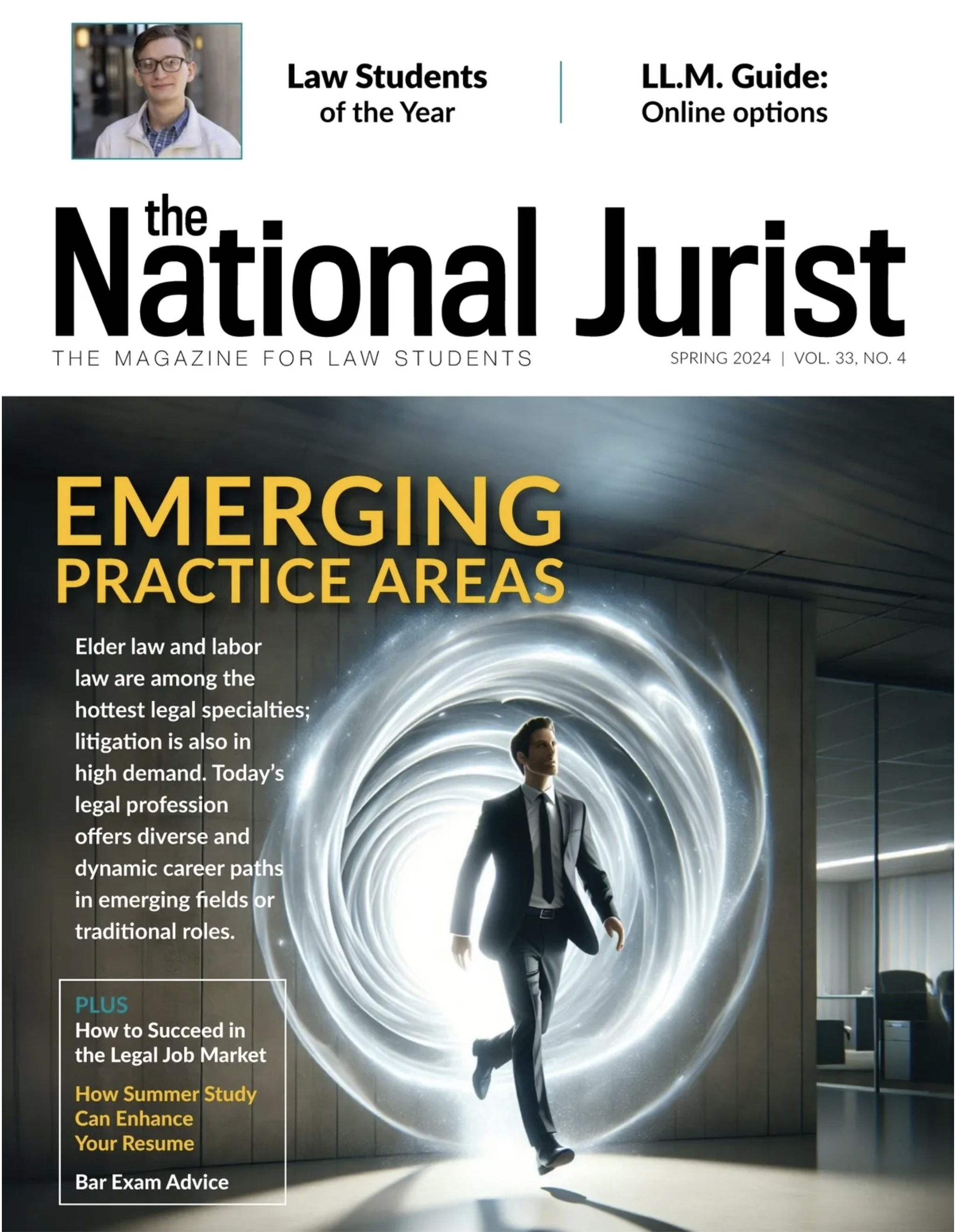Getting into law school last year was challenging. Not only were applications up, so were LSAT scores, allowing schools to be choosy. But if students thought landing a spot in law school was competitive, wait until they graduate in 2024.
They’ll be fighting for jobs then.
Sure, that’s the story for every class, but this one is different. It’s bigger. A good number of schools — hit with an avalanche of qualified prospective students — increased enrollment. In all, first-year J.D. enrollment went up nearly 10% from the previous year. But the job market is more impacted by employer needs than the number of job candidates.
“This significant increase in first-year students in the fall 2021 entering class likely means that, across the country three years from now, there will be roughly 4,000 more law school graduates than in the graduating classes in 2019 and 2020,” wrote Jerry Organ, a legal education expert, in an analysis on TaxProfBlog.
“Will there be a comparable increase in the number of full-time, long-term, bar passage required (FTLTBPR) or J.D. advantage (FTLTJDA) jobs waiting for these law school graduates?” asked Organ, a professor at University of St. Thomas School of Law — Minneapolis.
Like many others, he wonders. His post looked at which schools increased enrollment by the most students and in what regions they are based. Given that and employment trends, he looked at where possible trouble spots may sprout in 2024.
For instance, in 10 states enrollment went up a whopping 19% or more. Many of them only have one law school, so it could be tough sledding for graduates if the job market doesn’t boom in those regions.
“With the exception of North Carolina (with six law schools) and Alabama (with three law schools), all of the states with an increase of 19% or more in first-year enrollment are states with one law school (NH, NV, SD, VT, WY) or two law schools (AZ, NE, NJ),” he wrote. “The law schools in these ten states are likely to experience some significant challenges three years from now when their graduates are seeking employment.”
Some regions may be spared because the enrollment spike didn’t materialize or wasn’t as robust. But it could be tight in a number of areas, which he outlines in the blog.
To reach an employment rate of 80% in 2024, the legal market would need to produce 30,700 jobs where a law degree is required or an advantage. That’s 3,200 more than the legal market provided on average for the two most recent graduating classes, Organ said.
But most law schools are not as concerned. First, historical data shows that larger classes produce more overall legal jobs, even if the percent of employed grads drops. In short, when employers have more qualified entry-level candidates, they are more likely to hire at the entry-level.
Some schools have more of a national reach, and not just the most prestigious schools.
For example, the University of New Hampshire Franklin Pierce School of Law saw enrollment climb by more than 19%. But Dean Megan Carpenter said that some of that increase is related to its hybrid J.D. program, of which 95% of students are from out of state and don’t plan to practice in New Hampshire.
As a whole, most of the class of 2024 — 86% — comes from outside of the state, drawn by the school’s well-regarded intellectual property offering, she added. She noted how her school’s legal market “is not a local market, or even a regional one, but a national one.”
“To suggest that our graduates’ employment forecast is limited to New Hampshire is not only foolish given the nature of our enrollment increases, but historically inaccurate.”
The school’s class of 2020 saw employment at full-time, long-term, bar passage required or J.D. advantage positions drop to 70%. But Carpenter said those results were affected by a number of factors, including COVID.
“We are better off looking at previous years: in 2019, we had 83.6% in full-time, long-term, bar required/J.D. advantage,” she wrote. “In 2018, we had 78.1% in full-time, long-term, bar required/J.D. advantage.”
Organ said his article was designed to paint with a broad brush without getting into detailed analysis regarding any given law school. But he did note that New Hampshire is part of the Northeast, a region that “has seen a significant growth in first-year enrollment that is going to be an issue for all schools in the region.”
Schools in regions with stronger economies are also not as worried.
The Sandra Day O’Connor College of Law at Arizona State University also saw a significant enrollment hike. Indeed, it enrolled the largest class in its history in 2021, at 307, a 31% hike from 2020, when it enrolled 234.
Arizona is another state that Organ singled out where schools may have challenges in 2024. The only other law school, The University of Arizona James E. Rogers College of Law, also saw an enrollment increase — from 128 in 2020 to 145 in 2021.
“Instead of comparing this year’s 1L class sizes to last year’s 1L class size, a more accurate portrayal would be to compare that data to what the law school’s graduation numbers were in past years,” said Ray English, assistant dean, Office of Career and Employment Services at Arizona State. “Many schools shrink or grow their class sizes each year, often dramatically, so you have to be careful looking at one year versus the previous one.”
The school feels the job market in Arizona will remain vibrant. The city is one of the fastest growing in the nation, English said. The state has the fewest lawyers per 1,000 people, as well.
“And when you look at people taking the bar in Arizona, ASU Law and U of A’s law school account for less than half of them,” he said. “People come here because there are plenty of jobs. According to the Department of Labor, the Arizona attorney job market is expected to continue to grow through 2050.”
Organ agreed that some pockets in the nation are more vibrant than others.
“There certainly are some schools with more of a national employment footprint than a regional employment footprint, and there may be a few states (such as Arizona) where there will be a growing need for lawyers given the population growth,” he said.
He also noted how the school had a strong 2020 employment rate of 88%, but “whether the market can support perhaps 300 graduates with the same employment rate remains to be seen,” he said.








Comments (1)
The employment figures being examined in this study are for 2019 and 2020. The legal employment market has changed significantly since then. We have never had stronger numbers for early job offers and FTLTBPR/FTLTJDA jobs than we are seeing for the class of 2021, and the class of 2022 looks just as promising. I would hate for this article to give readers the impression that there will not be jobs for the class of 2024. While there are never any guarantees, our career services office is having to break the bad news to employers that there are no newly-graduated attorneys available for their positions because they are already employed. Through our professional network, we are hearing the same from many other schools. We feel confident that our enrollment rates have not exceeded the demand for new talent, and we are committed to maintaining that equilibrium in the future.